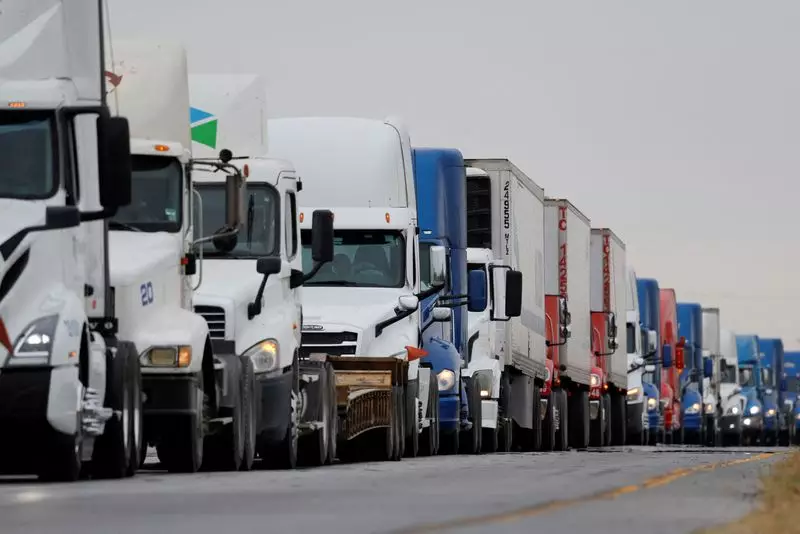The economic situation in Mexico remains challenging as 2025 approaches. The latest insights, derived from a Reuters poll, highlight a landscape of stagnation, with significant factors such as U.S. tariffs, migration policies, and internal economic measures shaping the nation’s future. With Mexico being the second-largest economy in Latin America, just behind Brazil, it faces unique challenges that differ from its regional counterparts. This article delves into the outlook for Mexico’s economy, focusing on the potential implications of U.S. policy changes and internal strategies.
According to a median estimate from 32 economists surveyed, Mexico’s GDP is anticipated to grow at a rate of 1.2% in 2025—an evident slowdown from the 1.6% growth experienced the previous year. This deceleration can largely be attributed to a trifecta of adverse conditions: declining private consumption, weaker export activity, and dwindling fixed investments. These challenges are compounded by uncertainty stemming from the political atmosphere in the U.S., particularly regarding the impending inauguration of President-elect Donald Trump and his proposed economic policies.
The primary concern for economists is the potential for Trump to follow through on his threat to impose a 25% tariff on Mexican goods. Such a move could dramatically affect Mexico’s export-dependent economy, triggering a ripple effect through various sectors. Economic experts like Pamela Diaz Loubet from BNP Paribas point to how this political uncertainty has already begun affecting investor confidence, which is vital for economic recovery.
Private spending is a critical pillar of Mexico’s economy, yet current sentiment indicates a decrease in consumer resilience. Elevated interest rates and anxiety surrounding U.S. policy have led to a reluctance among consumers to spend. This reduction in domestic consumption inevitably hampers overall economic momentum. Additionally, fixed investments, which are crucial for long-term growth, have stagnated due to geopolitical tensions and unpredictable economic policies.
Despite these pressures, there are some measures that the Mexican government is implementing aimed at supporting low-wage earners and specific industrial sectors, which may offer limited relief. However, these steps may not be sufficient to pivot the overall economic landscape away from stagnation.
As the countdown to Trump’s inauguration continues, Mexico is preparing itself for potentially drastic changes. The Sheinbaum administration has expressed optimism that proactive measures on illegal migration and drug trafficking can mitigate the severity of U.S. tariffs. Moreover, the government is also taking steps to reduce imports from China, which Trump has accused of infiltrating U.S. markets via Mexico. These steps indicate a willingness on the part of the Mexican government to adapt to U.S. demands, aiming to curry favor and avoid punitive economic measures.
However, the reality remains that Mexico’s government, while focused on fiscal restraint, must tread carefully. With global bond yields on the rise, the room for monetary policy adjustments by the Bank of Mexico (Banxico) is limited. The bank’s recent cuts in benchmark interest rates—from a high of 11.25% to 10%—illustrate a cautious approach in the face of rising economic pressures.
When it comes to monetary policy, analysts note that any reaction from Banxico to new tariffs will likely be conservative. In a recent poll exploring potential central bank actions in response to possible U.S. tariffs, a majority of economists believe the bank should maintain its current trajectory. Increments of 50 basis points are largely seen as too aggressive given the existing economic conditions. Instead, most economists expect a gradual reduction of interest rates, forecasting a decrease to 8.50% by the end of 2025.
Alberto Ramos of Goldman Sachs emphasizes that while new tariffs would undoubtedly hinder growth, the immediate monetary response is unlikely to be drastic. The bank must carefully evaluate its options in light of the broader economic context and the imperative to support growth without triggering further inflation concerns.
As Mexico contemplates its economic future, the myriad challenges posed by both domestic conditions and external pressures cannot be overstated. Navigating the complexities of U.S. relations while fostering a stable internal economy will be pivotal for Mexico’s growth trajectory. The upcoming months will be crucial in assessing the actual impact of U.S. policies and the effectiveness of Mexico’s adaptive strategies, shaped by both political realities and economic necessities.

